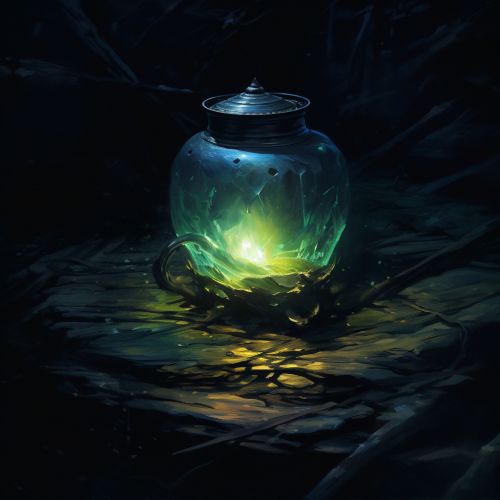Luminescence
Introduction
Luminescence is the emission of light by a substance not resulting from heat. It is thus a form of cold-body radiation. It can be caused by chemical reactions, electrical energy, subatomic motions, or stress on a crystal. This distinguishes luminescence from incandescence, which is light emitted by a substance as a result of heating.


Types of Luminescence
There are several types of luminescence, including photoluminescence, chemiluminescence, electroluminescence, sonoluminescence, and triboluminescence.
Photoluminescence
Photoluminescence is light emission from any form of matter after the absorption of photons (electromagnetic radiation). It is one of many forms of luminescence (light emission) and is initiated by photoexcitation (i.e., photons that excite electrons to a higher energy level in an atom), hence the prefix photo-.
Chemiluminescence
Chemiluminescence is the emission of light (luminescence) as a result of a chemical reaction. Some examples of chemiluminescence include the glow of luminol in forensic science and the reactions that cause glow sticks to glow.
Electroluminescence
Electroluminescence is an optical and electrical phenomenon in which a material emits light in response to an electric current passed through it, or to a strong electric field.
Sonoluminescence
Sonoluminescence is the emission of short bursts of light from imploding bubbles in a liquid when excited by sound.
Triboluminescence
Triboluminescence is an optical phenomenon in which light is generated through the breaking of chemical bonds in a material when it is pulled apart, ripped, scratched, crushed, or rubbed.
Mechanism of Luminescence
The emission of light that occurs in luminescence is initiated by excitation of an electron from a lower energy level to a higher one. This excitation energy can be supplied by a variety of sources, depending on the type of luminescence. The excited electron will then return to a lower energy level, releasing energy in the form of light.
Applications of Luminescence
Luminescence has many practical uses. For example, it is used in glow-in-the-dark materials, fluorescent lights, and LED lights. It is also used in biological research to study cellular processes, and in forensics to detect trace amounts of substances.
